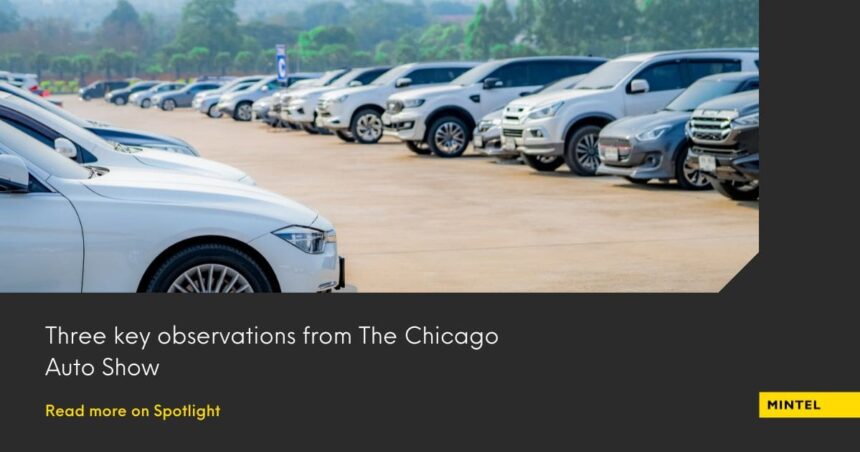The automotive sector is experiencing significant upheaval due to a variety of internal and external pressures. Consequently, manufacturers and retailers face novel difficulties in engaging with customers and persuading them to buy a car in the shorter term. Auto shows, like The Chicago Auto Show, present consumers with a one-stop shop for convenient research. With 16% of consumers, who are planning to buy a vehicle within the next three years, planning to conduct research at auto shows, these events provide an effective opportunity to reach consumers, especially younger consumers, who are among the most interested in purchasing in the shorter term.
Below are three key takeaways from this year’s auto show:
1. Brands go beyond the vehicle
To improve perceptions and drive consumer consideration, brands are encouraged to extend their efforts beyond the vehicle itself. This involves focusing on various brand-building efforts that may not directly relate to driving a purchase but can impact purchase consideration later on. For instance, consumers, especially younger ones, indicate a pronounced preference for environmentally conscious auto brands. Brands that showcase these efforts can build positive perceptions, which is particularly important as consumers are mindful of the brands they choose to purchase from.
Subaru has positioned itself as “More Than a Car Company” by creating an interactive exhibit at the Chicago Auto Show that resembled a national park. Additionally, Subaru has demonstrated its dedication to animal welfare by organizing a recurring pet adoption event at the show.
2. Hybrids and electric vehicles take center stage
Recent Mintel data shows two-thirds of consumers who are planning to buy a vehicle within the next three years are open to the idea of choosing a hybrid or electric vehicle as their next car. In response to this interest, automotive brands are increasingly highlighting these types of vehicles to potential buyers to boost awareness and encourage consideration. Despite the enthusiasm, there is still a notable concern about the ease of charging these vehicles, with over half of consumers worried about the accessibility of charging stations nearby.
To address these concerns, companies like Volta took the initiative at the Chicago Auto Show to present interactive displays that included their automotive partners and maps showing where charging stations are located, aiming to educate attendees. Additionally, various brands took the opportunity to display their home charging solutions and the costs associated with installation to help alleviate worries about charging accessibility.
3. Alternate mobility scoots in
Recent Mintel research shows nearly 2 in 10 consumers between the ages of 18 and 44 intend to buy a personal mode of transportation, such as a bike, scooter, or moped, within the upcoming year. While these alternate modes are not expected to replace the use of personal cars, they are seen as supplements to owning a vehicle. Car manufacturers are becoming aware of the growing consumer interest in alternative forms of mobility. Honda presented its Motocompacto electric scooter at the Chicago Auto Show, where attendees had the opportunity to test the compact, suitcase-sized scooter on a small track.
What we think
Auto shows will remain a valuable resource for consumers conducting research in a market that’s challenged with issues related to the affordability and availability of vehicles. As automakers continue to electrify vehicle fleets, it’s essential for brands to use these events to boost awareness, provide education, and influence purchasing decisions. In the future, it will be crucial for brands to create favorable impressions that extend beyond their cars, demonstrating tangible results as buyers grow more mindful of their purchases and the companies they support.
For more information on the automotive industry, please contact us today and one of our experts will be in touch.







